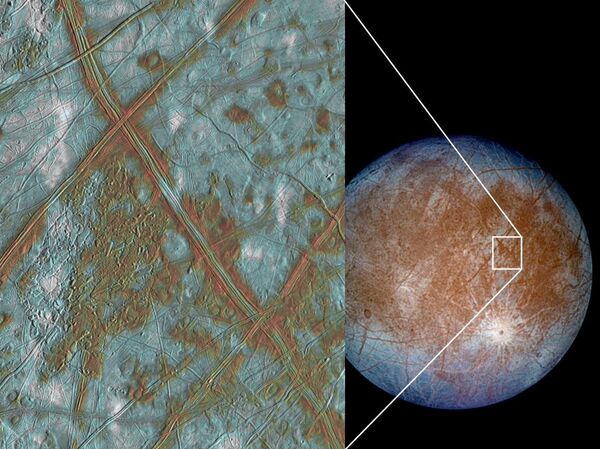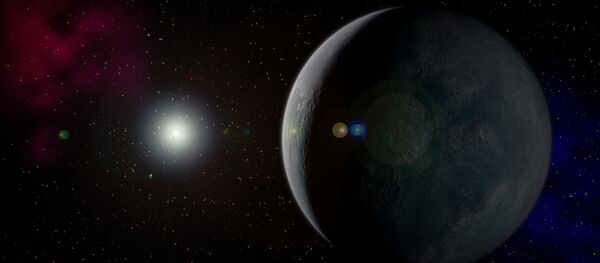Lead author Christine McCarthy of Columbia University was quoted by the website sci-news.com as saying that "scientists had expected to see cold, dead places, but right away they were blown away by their striking surfaces."
"There was clearly some sort of tectonic activity — things moving around and cracking. There were also places on Europa that look like melt-through or mushy ice," he said.
Creating enough heat for these active processes, which take place far away from the Sun, is only possible with the help of tidal dissipation, according to him.
"The effect is a bit like what happens when someone repeatedly bends a metal coat hanger," he pointed out.
The #Moon and #Jupiter tonight, April 16 from Warwick #RI USA. Jupiter's moons L-R: Callisto, Io, Europa, Ganymede. pic.twitter.com/q8jn2fvGgc
— Jason Major (@JPMajor) 17 апреля 2016 г.
In a bid to try to understand this process better, the US scientists ran a spate of deformation experiments, loading ice samples into a compression apparatus.
"We discovered that, relative to the models the community has been using, ice appears to be an order of magnitude more dissipative than people had thought," Reid Cooper of Brown University said.
Europa was first discovered by Galileo Galilei in 1610. In 1979, it was first examined by NASA's Voyager mission and it was first seen in detail by NASA's Galileo orbiter in the 1990s, according to the sci-news.com.






